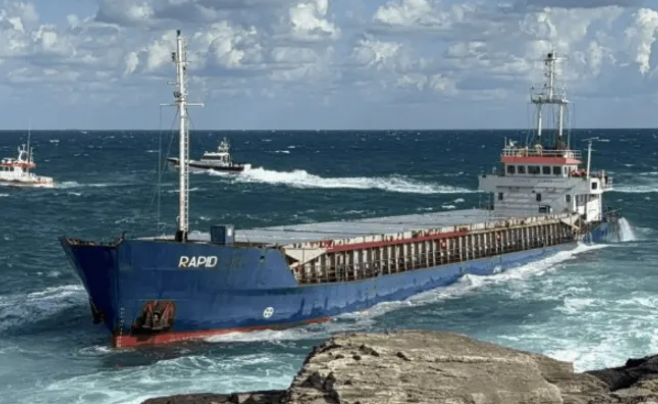The World Container Index (WCI) dropped below the $2,000 psychological level falling 6% by the end of this week, with the National Day Golden Week still a week away. Among them, the Asia-Europe route (headhaul transport) rates fell by 11%, also breaking through the $2,000 level, with the final freight rate close to the composite index, around $1,91.
The other headhaul transport routes, such as from Asia to the Mediterranean, the U.S. West Coast, and the U.S. East Coast, also further declines in freight rates, with decreases ranging from 4% to 9%.
Industry analysis shows that, under normal circumstances, the break-even point for U.S. West Coast route (such as Shanghai to Los Angeles) generally falls between $1,500-$2,000/FEU. Large shipping may have lower costs (around $1,300-$1,500) due to the size of their vessels, fuel efficiency, and operational optimization, but the costs for small and medium-sized shipping companies or older vessels may approach $2,000. When freight rates fall below this level, shipping companies' profits are squeezed, they may even face risks of losses, which could trigger the suspension of services, frequency reductions, or adjustments in capacity to stem losses.
Drewry's current quote $1,913, although still a 15% premium compared to the last quote in 2023, has seen a surge in freight rates under the of the situation in the Red Sea. After the National Day Golden Week, a seasonal slowdown will be ushered in, and the sluggish demand trend may further exacerbate the downward in ocean freight rates. This downward momentum may also have a domino effect, causing prices in the bulk carrier and other freight segments to follow the decline in container freight rates.
The accelerating downward trend is more obvious in the Shanghai Containerized Freight Index (SCFI). As of September 19, 2025, the index recorded largest weekly percentage drop of more than 14.3%, with the index value declining by about 200 points, mainly due to the sharp decline in freight rates the Asia-to-North America route. In the SCFI index, both the headhaul transport routes from China to the U.S. West Coast and East Coast saw freight fall by more than 20%.
It is worth noting that the SCFI index can more timely reflect market sentiment, while other price indices need 1-2 to reflect this market change, which indicates that there may still be considerable room for freight rates to fall before the Golden Week data is released.
Although the U.S. reassessing tariff situations and the GRI schedule, no signs of positive demand improvement have been seen so far. While shippers are at an advantage in pricing, this situation only leads an increase in the number of empty sailings for certain ports of call, thereby affecting their operational turnaround times.
Drewry's commentary echoes the market's expectations further declines in freight rates, although all parties are still closely monitoring tariff collections and geopolitical situations, which will determine the extent of the decline in freight rates.
Decline in freight rates has not suppressed newbuilding activities, with deliveries of 10-10.4 million TEU expected by 2030, of which about 0% are expected to be delivered by 2028. The World Bank predicts that the average growth rate of the container shipping industry could reach as high as 6% the medium term, while the industry will continue to focus on building smarter and greener vessels.
[Related News]
Shipping companies start a "rate war"? The Asia-Europe route is deeply involved in the war, and the trans-Pacific's upward trend "stops"
The "plummeting" freight rates have been declining for 14 consecutive weeks! Tariffs and port fees are bothchallenging", what changes will the shipping industry see in 2025?

Last
Breaking news! A cargo ship collided with a ferry, resulting in serious injuries to 12 people, and the cause of the accident is under investigation
According to the global ship tracking platform on September 22, the Panamanian cargo ship "Artvin" and the Turkish ferryKamil Sayi

Next
A cargo ship ran aground on the way to Ukraine, and a rescue operation was quickly launched!
On September 18, a cargo ship named "Rapid", flying the flag of Tanzania, ran aground near Pink Rocks Kefken, Turkey.The vessel, w
